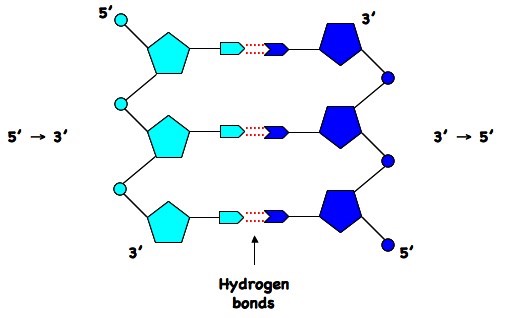1.2 Structure of DNA - alunga20/Concepts_of_Molecular_Biology GitHub Wiki
 Organization of DNA.
Organization of DNA.
Nucleic acids are composed of nucleotide monomers which are linked into a single strand via condensation reactions
* The phosphate group of one nucleotide attaches to the sugar of another nucleotide (at the 3’– hydroxyl (-OH) group)
* This results in a phosphodiester bond forming between the two nucleotides (and water is produced as a by-product)
* Successive condensation reactions result in the formation of long polynucleotide strands
Two polynucleotide chains of DNA are held together via hydrogen bonding between complementary nitrogenous bases
* Adenine (A) pairs with Thymine (T) via two hydrogen bonds
* Guanine (G) pairs with Cytosine (C) via three hydrogen bonds
In order for the bases to be facing each other and thus able to pair, the strands must be running in opposite directions
* The two strands of DNA are described as being antiparallel
As the antiparallel chains lengthen, the atoms will organise themselves into the most stable energy configuration
* This atomic arrangement results in the double-stranded DNA forming a double helix (~10 – 15 bases per twist)
